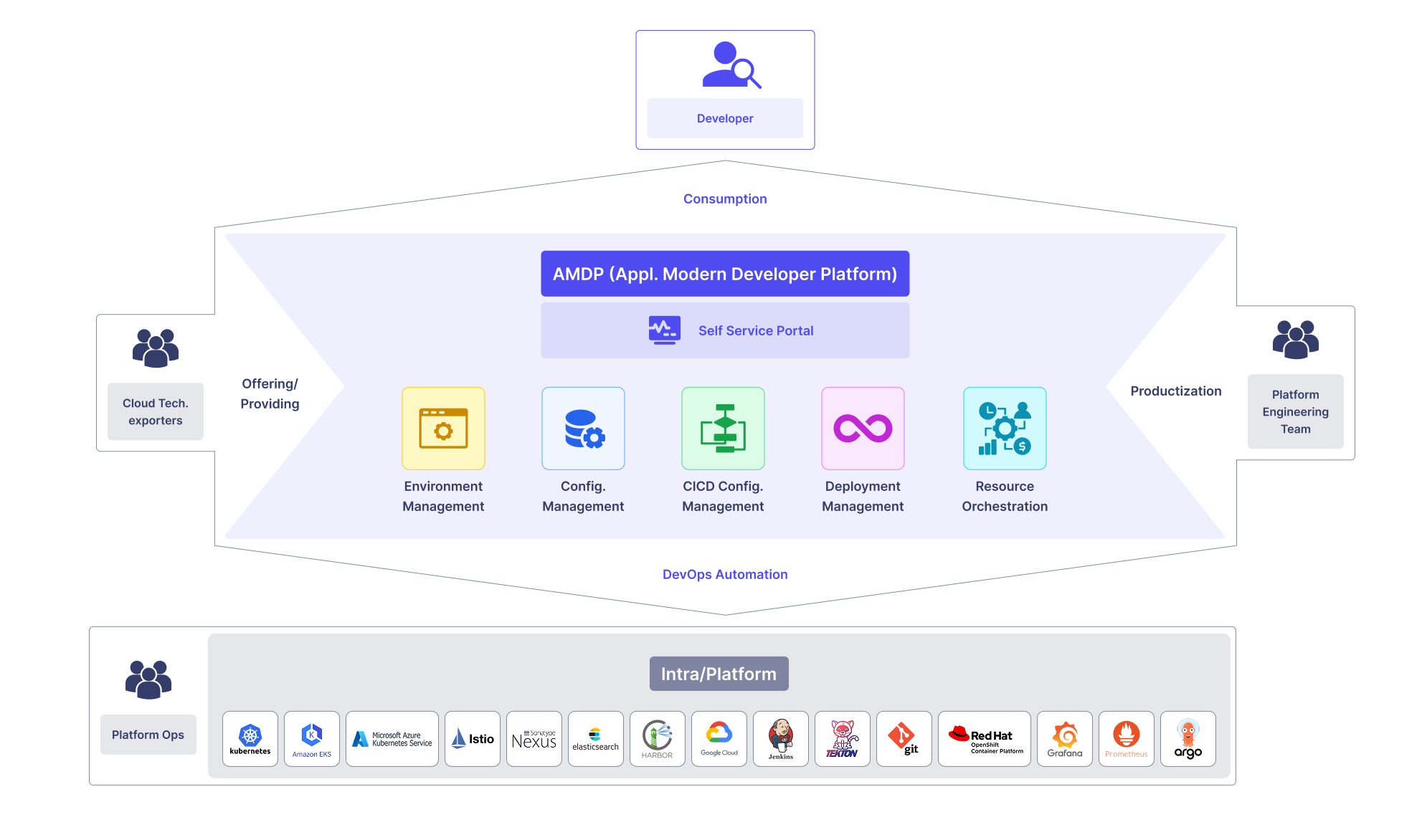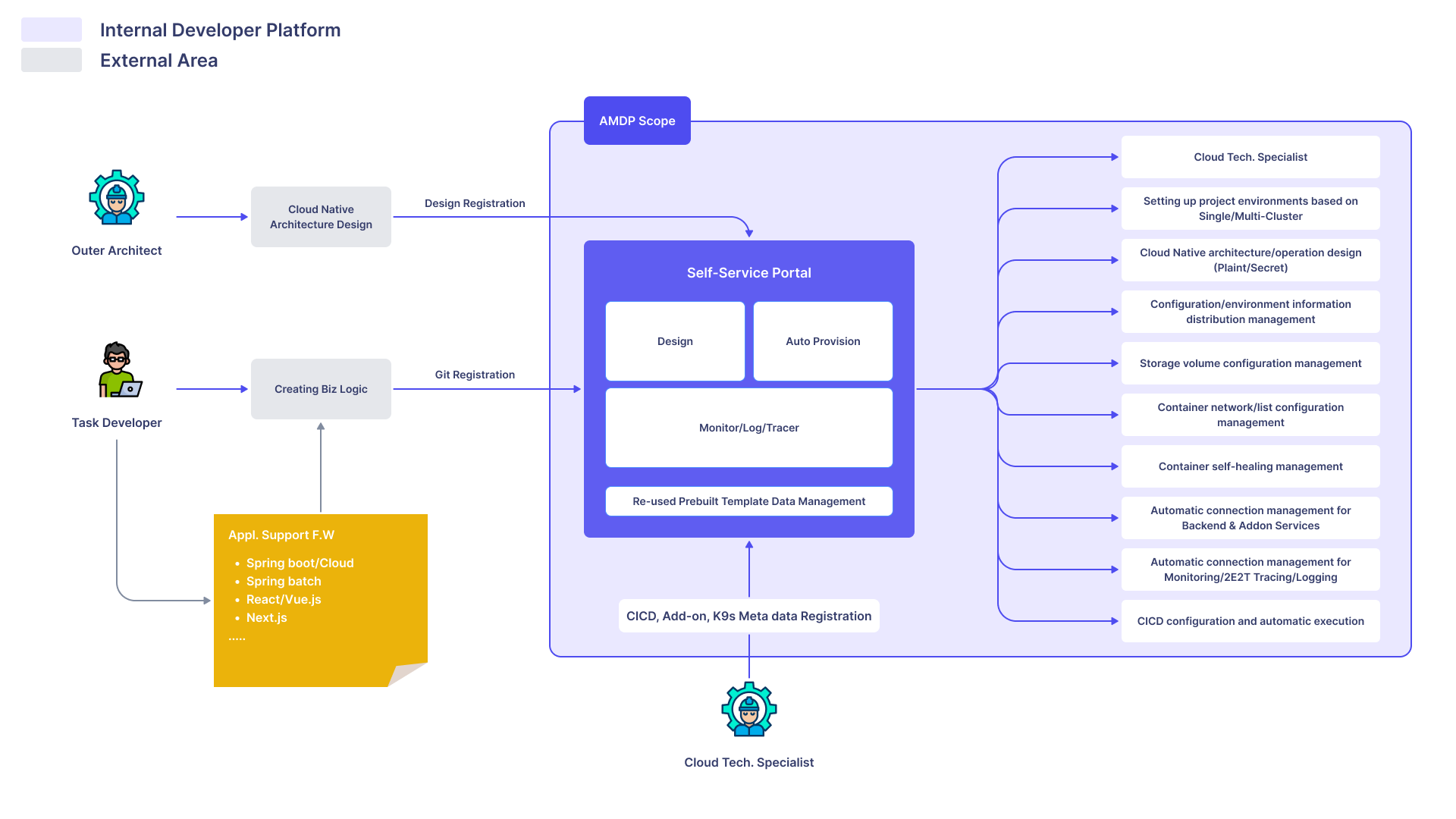Concepts
How does AMDP work?

AMDP offers a comprehensive set of tools that enable developers to design, deploy, and manage applications with greater ease. At its core, AMDP integrates with cloud-native technologies and provides automation capabilities to handle critical tasks such as:
- CI/CD automation for seamless software delivery and continuous deployment pipelines.
- Cloud and database integration to manage application services and database operations efficiently.
- Service orchestration for handling microservices, APIs and serverless functions in modern cloud environments.
- Remote Development SandBox: provides developers with all necessary tools to write, build, test and deploy software without relying on their local machines.
- Optimize developer efficiency and code integrity: by providing access to a comprehensive set of visualized dashboards such as : Application Status Dashboard, CI/CD Status Dashboard, DORA & Cycle Time Dashboard, Code Quality and Code Analysis Dashboard
Why we use AMDP?
AMDP offers several benefits to developers and organizations:
- Faster Development: By automating many aspects of the application lifecycle (e.g., CI/CD, database management, and cloud integration), AMDP reduces the time and effort required for application deployment and updates.
- Streamlined Application Management: AMDP simplifies the management of complex application landscapes by integrating multiple development tools into a single platform. This reduces the complexity of maintaining and deploying applications across different environments.
- Scalability and Flexibility: AMDP is built with cloud-native architectures in mind, enabling organizations to scale applications efficiently and deploy them in a flexible, responsive manner that meets the dynamic needs of modern enterprise environments.
When and where to use AMDP?
AMDP is especially useful in environments where enterprises are transitioning from legacy applications to modern, cloud-based solutions. It is ideal for organizations looking to automate the following:
- Legacy Modernization: When migrating legacy applications to cloud-native platforms, AMDP supports the process by offering integration tools and frameworks that make the transition smoother.
- Microservices and Kubernetes: For teams adopting microservices architectures and managing containerized applications with Kubernetes, AMDP provides powerful tools to streamline development, deployment, and orchestration.
- CI/CD Automation: AMDP excels in environments where automated deployment pipelines are needed for faster and more reliable software delivery.
- Remote Development environment (RDE): for project continuity with flexible environment configurations to enable development anytime, anywhere.
Who uses AMDP?

- User level: AMDP is used by Developers, DevOps engineers, and Cloud architects working within organizations that are modernizing their application infrastructure.
- Team level: It is primarily designed for teams working with cloud-native technologies, microservices architectures, and Kubernetes.
- Enterprise level: It is particularly beneficial for enterprises aiming to streamline their DevOps practices and improve the efficiency and scalability of their application management.